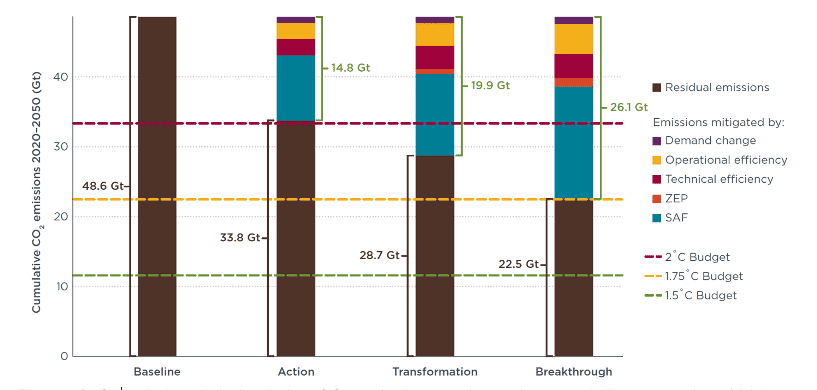
Airlines and governments have committed to achieving net-zero emissions from aviation by mid-century. In this report, we develop a roadmap to evaluate the emission impacts of ICCT scenarios for aviation technology and operations using a new Projection of Aviation Carbon Emissions (PACE) model. Our goal is to assess the extent to which measures can reduce cumulative carbon dioxide (CO2) emissions from global aviation in line with 1.5°C, 1.75°C, and 2°C targets.
Three decarbonization scenarios—Action, Transformation, and Breakthrough—are analyzed along with a Baseline scenario, each built around six important parameters: (1) traffic; (2) aircraft technology; (3) operations; (4) zero-emission planes (ZEPs); (5) sustainable aviation fuels (SAFs); and (6) economic incentives.
Detailed findings of the study include:
Overall, we conclude that new technologies under development can cut aviation CO2 to near zero in 2050, but that immediate action is needed from governments to peak emissions this decade to put aviation on a 1.75ºC pathway. Either atmospheric carbon removals or curbs to traffic growth will be needed to meet a 1.5ºC temperature pathway.

Figure. Cumulative global aviation CO2 emissions under various modeling scenarios, 2020-2050
This paper was revised on 30 June, 2023 to correct captions on Figures 10 (ES-2) and B-1 and to amend an estimate of projected ticket price increases. After taking into account fuel efficiency gains through 2050, ticket prices are expected to rise by about 6% under the Breakthrough case. The original can be found here.